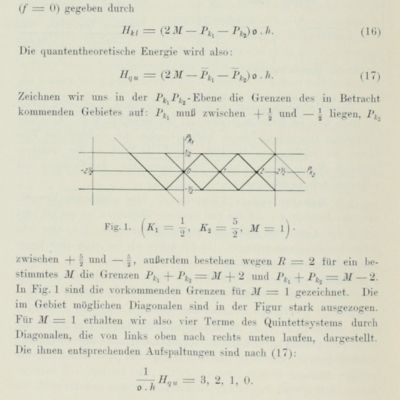Einthoven, W.
Über einige Anwendungen des Saitengalvanometers. [AND] Über eine neue Methode zur Dämpfung oszillierender Galvanometerausschläge" [AND] Weiter Mitteilungen über das Saitengalvanometer. Analyse der saitengalvanometrischen Kurven. Masse und Spannung des Quarzfadens und Widerstand gegen die Fadenbewegung.
Leipzig, Johann Ambrosius Berth, 1904-1906. Three papers in three. 8vo (22.5 x 14.5 cm). 11 pp.; one text figure ( Anwendungen) [AND] 12 pp.; two text figures, large, folded plate ( Dämpfung) [AND] 68 [32, 36] pp.; five text figures ( Weitere Mittleilungen). Original uniform printed wrappers.
The Dutch medical doctor, physicist, and Nobel Prize winner Willem Einthoven (1860-1927) invented the first practical electrocardiogram (ECG) by creating a string galvanometer in 1903. In 1924, he received the Nobel Prize in Medicine for this invention. The present papers are the very rare offprints, "Überreicht vom Verfasser", of his reports on the structure and use of his string galvanometer, and form the basis for his Nobel Prize. Einthoven was only 26 when he was appointed professor of physiology at Leiden University. He coined the word electrocardiogram, and then invented the string galvanometer with the sole purpose to measure, accurately and meaningfully, the electrical activity of the heart over time. "In 1903 he defined the standard measure for general use - one centimeter movement of the ordinate for one millivolt tension difference and a shutter speed of twenty-five millimeters per second" (DSB). The work was published in the famous Annalen der Physik, Vierte Folge, Band 14, 16, and 21 - the leading scientific journal of its day, and in which many Nobel Prize winners, including Einstein, published their most important scientific discoveries. The third paper is a consolidated offprint, originally published in two parts, with new pagination but continuous figure numbering. Tiny chip and stain to rear wrapper of the third paper. Otherwise very good, clean copies. Very rare. DSB IV, pp. 333-335.
![Über einige Anwendungen des Saitengalvanometers. [AND] Über eine neue Methode zur Dämpfung oszillierender Galvanometerausschläge" [AND] Weiter Mitteilungen über das Saitengalvanometer. Analyse der saitengalvanometrischen Kurven. Masse und Spannung des Quarzfadens und Widerstand gegen die Fadenbewegung.](https://schierenberg.nl/media/cache/product_thumb/66174/66174_x.jpg)




